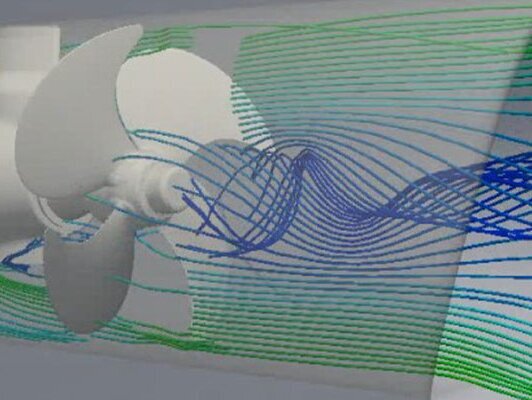Seakeeping is defined as ‘a measure of how well-suited a vessel is to conditions when underway’.
As such, seakeeping is an important way of determining how suitable a vessel is for the safe carriage of passengers and/or goods.
Seakeeping is also used to determine how suitable a vessel is for interactions with other structures (e.g. ship to ship transfers, or motions during evacuations).
Thanks to Brookes Bell’s impressive numerical analysis capability, we are able to create ship rolling models that can be used to evaluate ship capsize and multiple cargo shift scenarios quicker and with greater fidelity than other tools.
Our primary tool for seakeeping is Ansys AQWA - this is used for hydrodynamic assessments and the interactions of structures in waves. It can also be coupled with Ansys FEA and Ansys Fluent for complex multiphysics simulations of fixed and floating marine structures.
Seakeeping studies can be performed in pure CFD (OpenFOAM, Fluent, Star CCM+) when considering steep waves, green-sea loading and other non-linear hydrodynamic problems.
Mooring analysis and cable/pipe dynamics
We have several advanced tools for mooring analysis and cable dynamics and have been applying them for over a decade.
Ansys AQWA
Ansys AQWA is our primary tool for mooring analysis and cable dynamics.
Unlike many solvers, Ansys computes the disturbed wave pattern around a floating body and the wave interaction between separate bodies and, for that reason, is the most capable of all software tools for this type of analysis.
Orcina OrcaFlex
Orcina OrcaFlex is a cable and pipe dynamics solver that has a long history.
We have used this tool for a number of years and are able to reuse OrcaFlex models provided to us when necessary.
Our naval architects have used these pieces of software for a variety of design and consultancy purposes, for example:
- Analysis of mooring arrangements during loading discharge and ship to ship operations
- The simulation of parametric roll in a containership
- The calculation of acceleration loads on project cargoes in cases of shifting or damaged loads
- To assess the design of a lengthened marine evacuation slide for use on oil rigs and platforms
- To evaluate the damping resulting from active fin stabilisation
Why choose Brookes Bell for your seakeeping analysis software
There are several reasons why you should choose Brookes Bell for your seakeeping analysis software requirements:
- We have doctorate-level experts in hydrodynamics who are highly-experienced in forensic analysis
- We use the most advanced software tools, and have done so for over two decades
- Our expertise doesn’t end with seakeeping. When required, we can take results onwards to address structural failures in finite element software or the motion of internal fluids in computational fluid dynamics
- We can offer you cost effective-solutions for numerical analysis
To find out more about Brookes Bell’s manoeuvering and seakeeping services, speak to us today.

